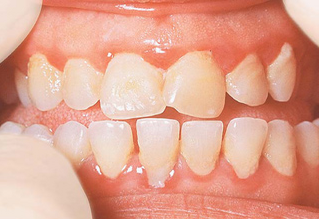Dental plaque
We consume solid and liquid food every day. After chewing, with the help of certain muscles in our mouth and tongue and thanks to the saliva produced by our system, we move this food towards the digestive system. Unfortunately, some food debris, even microscopic, remains in the mouth. This debris is lodged on the walls of the teeth, among other things.

The acid produced by the bacteria attacks the enamel
Combined with the bacteria naturally present in the mouth, this debris will form, after a period of twenty-four hours without brushing the teeth, a thin film (biofilm) called dental plaque.
The acids rejected by these bacteria, by transforming the sugars of the food, will promote the adhesion of plaque to teeth and gums. These are the same acids produced by bacteria that directly attack tooth enamel, causing cavities.

The evolution of plaque
From the first day without brushing, this soft, gelatinous film, difficult to detect with the naked eye, will thicken and make the teeth less shiny.
After a few days, the mineral salts in the saliva will cause the plaque to harden and calcify, which will then become dental tartar. But before this transformation occurs, plaque can easily be removed by brushing and flossing on a regular basis.

Descaling
Tartar is therefore the result of aging and calcification of dental plaque. Very resistant deposits will come to lodge at the edge of the gums, on the wall of the teeth, and gradually towards the roots. The color of tartar varies from white to brownish, but it can also be darker, almost black, depending on the colorants present in coffee, tea, tobacco or other consumer products.
Becoming the obvious cause of cavities and many gum diseases, it is imperative to remove all tartar from your mouth. Tartar is much too hard and often difficult to access without the help of dental instruments, brushing your teeth, even vigorously, will not remove it. Scaling must be performed by a hygienist, a dentist or sometimes a periodontist.
